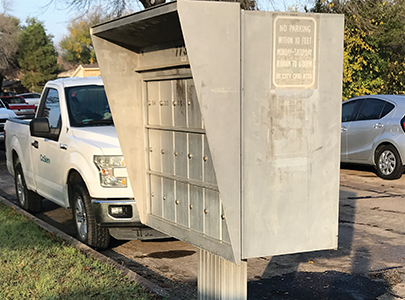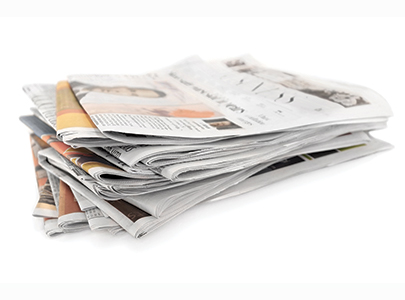FIRST-PERSON: Postal rate hikes out of control
Feb 1, 2024

CHIP HUTCHESON
Content Strategist | Kentucky Today
Soaring prices. We’ve lamented them in the past few years, especially when it comes to what you pay at the grocery store or how much it costs to fill up your gas tank. While we’re heartened to see the price of gasoline drop under $3 a gallon and the cost of food items like eggs, coffee, ground beef and milk showing decent declines this month, the U.S. Postal Service is showing no sign of backing off its price hiking strategy.
For the majority of Americans, we’ve figured out ways to not have to buy stamps like we did a decade ago. The option of paying bills online and sending texts or emails has resulted in a significant drop in first–class mail. But let’s face it — there’s nothing like receiving a birthday card in the mail or sending a card to tell someone how much you appreciate them and how they have made a positive impact in your life.
If you mail cards or letters these days, prepare to pay more. On Jan. 21, the cost of a first-class postage stamp will increase from 66 cents to 68 cents. Doesn’t seem too bad at first glance, but it’s a signal that USPS has no plans to halt escalating prices that might not cost you a lot over a year’s time, but for many businesses, it is just another threat to their viability.
This is the fourth increase in 18 months — the most frequent mailing rate–hike schedule in the Postal Service’s 248-year history. It’s no secret that USPS is hemorrhaging red ink, but the recent increases have done nothing to improve its financial stability, and at the same time, hikes have harmed mail volume. In spite of enacting two rate hikes a year, as it did in 2023 and is expected to follow suit this year, the Postal Service lost $6.5 billion in fiscal year 2023 and is projecting a $6.3 billion loss this fiscal year.
Consider this troubling fact — during the entire 20th century, USPS increased the price of a first-class stamp 17 times. But since 2000, it has already increased the price of a stamp 16 times, and that’s for just 23 years into this century.
When I was born, a first-class stamp cost three cents. It was raised a penny the next year and then went five years before another cent was added to the price. With the Jan. 21 increase, it has gone up 13 cents since January 2019.
There are other mailing increases that don’t impact people very often, but they are significant. Postcards will increase two cents (from 51 cents to 53 cents). Ground advantage will increase 5.4 percent, priority mail goes up 5.7 percent and priority mail express climbs to a 5.9 percent increase.
During my 41-year career as a newspaper publisher, fighting against USPS rate increases was part of the normal business routine. It was hard to stomach paying more each year to mail newspapers while service declined. We’d often hear from out-of-state subscribers who would receive multiple papers on the same day — although those papers maight have been printed a week or two apart. A year before my retirement from the newspaper business, I had the opportunity to testify at a hearing of the U.S. Senate Committee on Homeland Security and Government Affairs regarding the burdensome rate increases and how those adversely affected the bottom line of newspapers. Senators were gracious to hear my observations and comments, but it appears no one has the remedy to cure the postal beast’s financial dilemma.
Some of you reading this article might still subscribe to your local newspaper, and chances are that many receive it through the mail. Just this month, the Henderson Gleaner announced it would use USPS to deliver its print edition that is published five days a week, joining weeklies and most dailies in the state in abandoning carriers and relying on USPS to deliver papers. There are a number of reasons that many newspapers are closing their doors, including competition from the Internet, the decline in locally owned businesses and severe reductions in staffing. But these significant USPS rate increases factor in, as well, and add insult to injury when delivery standards are sub-par.
The frequent and substantial rate increases pose what is termed “a significant threat to community newspaper publishers and compound the earlier increases that have already been harmful,” according to the National Newspaper Association.
Reps. Emanuel Cleaver (D-Mo) and Sam Graves (R-Mo) have sent a letter to the USPS Board of Governors, urging them to delay any more increase this year until the effects of the unprecedented twice-a-year increases on mail volume and revenue are better understood.
You have to be quite an optimist to think that the heavy freight train of postal rate hikes will stop. A day of reckoning seems to be near, and whoever can figure out how to deliver products more economically and effectively than USPS will have a gold mine of opportunities.










